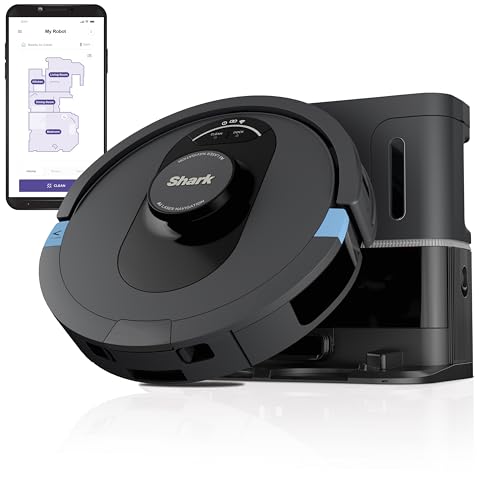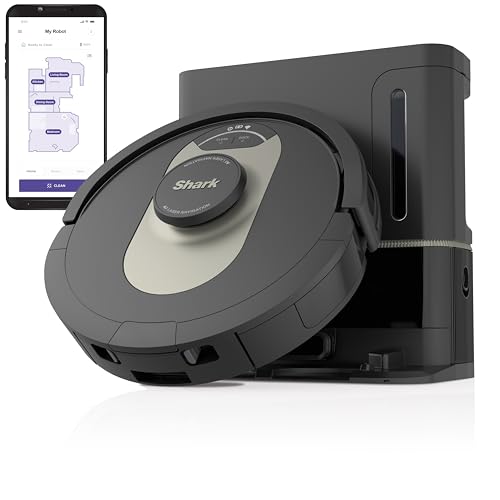See What Bagless Self-Navigating Vacuums Tricks The Celebs Are Utilizi…
페이지 정보

본문
 bagless robot vacuum mop Self-Navigating Vacuums
bagless robot vacuum mop Self-Navigating Vacuums Bagless self-navigating vacuums feature an elongated base that can hold up to 60 days of dust. This means you do not have to purchase and dispose of replacement dustbags.
Bagless self-navigating vacuums feature an elongated base that can hold up to 60 days of dust. This means you do not have to purchase and dispose of replacement dustbags.When the robot docks at its base the debris is shifted to the trash bin. This process can be very loud and alarm nearby people or animals.
Visual Simultaneous Localization and Mapping (VSLAM)
While SLAM has been the subject of many technical studies for a long time however, the technology is becoming more accessible as sensor prices decrease and processor power increases. One of the most prominent applications of SLAM is in robot vacuums, which make use of many sensors to navigate and build maps of their surroundings. These quiet circular vacuum cleaners are among the most used robots in homes today. They're also very efficient.
SLAM operates by identifying landmarks and determining the robot's location relative to them. Then, it blends these observations into an 3D map of the surrounding which the robot could then follow to move from one location to the next. The process is continuously re-evaluated, with the robot adjusting its positioning estimates and mapping constantly as it collects more sensor data.
The robot can then use this model to determine where it is in space and determine the boundaries of the space. This is similar to how your brain navigates an unfamiliar landscape, using landmarks to help you understand the landscape.
This method is efficient, but has some limitations. Visual SLAM systems can only see a limited amount of the world. This affects the accuracy of their mapping. Visual SLAM requires a lot of computing power to function in real-time.
Fortunately, a variety of different approaches to visual SLAM have been created, each with their own pros and pros and. One of the most popular techniques, for example, is called FootSLAM (Focussed Simultaneous Localization and Mapping) that makes use of multiple cameras to enhance the performance of the system by using features to track features in conjunction with inertial odometry as well as other measurements. This method, however, requires more powerful sensors than visual SLAM, and is difficult to maintain in high-speed environments.
Another approach to visual SLAM is to use LiDAR SLAM (Light Detection and Ranging), which uses a laser sensor to track the geometry of an environment and its objects. This technique is particularly helpful in spaces that are cluttered, where visual cues may be masked. It is the preferred method of navigation for autonomous robots working in industrial settings, such as warehouses and factories as well as in self-driving cars and drones.
LiDAR
When purchasing a robot vacuum, the navigation system is one of the most important aspects to take into account. Without highly efficient navigation systems, a lot of bagless electric robots can struggle to navigate to the right direction around the home. This can be a problem, especially if there are large rooms or furniture that must be moved out of the way.
Although there are many different technologies that can aid in improving the control of robot vacuum cleaners, LiDAR has been proven to be especially efficient. It was developed in the aerospace industry, this technology makes use of a laser to scan a space and create the 3D map of the environment. LiDAR aids the robot to navigate by avoiding obstacles and planning more efficient routes.
The main benefit of LiDAR is that it is extremely precise in mapping when as compared to other technologies. This can be a huge advantage as the robot is less likely to colliding with objects and taking up time. In addition, it can aid the robot in avoiding certain objects by establishing no-go zones. For instance, if you have a wired coffee table or desk it is possible to make use of the app to create a no-go zone to prevent the robot vacuum bagless self emptying from coming in contact with the wires.
LiDAR is also able to detect edges and corners of walls. This is extremely useful when using Edge Mode. It allows the robots to clean along the walls, which makes them more effective. It can also be helpful in navigating stairs, since the robot can avoid falling down them or accidentally straying over the threshold.
Gyroscopes are another feature that can assist with navigation. They can help prevent the robot from crashing into objects and can create a basic map. Gyroscopes tend to be less expensive than systems that utilize lasers, like SLAM, and they can still produce decent results.
Other sensors used to help with navigation in robot vacuum self empty bagless vacuums can comprise a variety of cameras. Some robot vacuum bagless vacuums utilize monocular vision to identify obstacles, while others utilize binocular vision. These allow the robot to detect objects and even see in the dark. The use of cameras on robot vacuums can raise privacy and security concerns.
Inertial Measurement Units (IMU)
IMUs are sensors that monitor magnetic fields, body-frame accelerations and angular rate. The raw data is then filtered and merged to generate information about the position. This information is used to determine robot positions and control their stability. The IMU sector is growing because of the use of these devices in virtual and Augmented Reality systems. The technology is also used in unmanned aerial vehicles (UAV) for navigation and stability. The UAV market is rapidly growing and IMUs are vital for their use in battling fires, finding bombs, and carrying out ISR activities.
IMUs are available in a range of sizes and costs according to the accuracy required and other features. Typically, IMUs are made from microelectromechanical systems (MEMS) that are integrated with a microcontroller and a display. They are built to withstand extreme vibrations and temperatures. They can also be operated at high speeds and are resistant to interference from the outside making them a crucial instrument for robotics systems as well as autonomous navigation systems.
There are two types of IMUs. The first one collects raw sensor data and stores it on a memory device such as an mSD card, or through wireless or wired connections with computers. This type of IMU is called datalogger. Xsens' MTw IMU, for instance, comes with five accelerometers that are dual-axis on satellites, as well as an underlying unit that records data at 32 Hz.
The second kind of IMU converts sensor signals into already processed information which can be transmitted over Bluetooth or via a communications module to a PC. The information is analysed by an algorithm for learning supervised to identify symptoms or activity. In comparison to dataloggers, online classifiers use less memory and can increase the capabilities of IMUs by removing the requirement for sending and storing raw data.
IMUs are subject to drift, which can cause them to lose their accuracy as time passes. IMUs should be calibrated on a regular basis to prevent this. Noise can also cause them to provide inaccurate data. Noise can be caused by electromagnetic disturbances, temperature changes or vibrations. IMUs have a noise filter and other signal processing tools to reduce the effects.
Microphone
Certain robot vacuums come with a microphone that allows users to control them remotely from your smartphone, connected home automation devices and smart assistants like Alexa and the Google Assistant. The microphone can also be used to record audio in your home, and some models can also function as security cameras.
The app can be used to create schedules, designate cleaning zones, and monitor the progress of a cleaning session. Certain apps can also be used to create "no-go zones' around objects that you don't want your robot to touch and for advanced features like monitoring and reporting on dirty filters.
The majority of modern robot vacuums come with an HEPA air filter to remove pollen and dust from your home's interior, which is a great option if you suffer from respiratory issues or allergies. The majority of models come with a remote control that lets users to operate them and create cleaning schedules, and a lot of them are able to receive over-the air (OTA) firmware updates.
One of the major distinctions between the latest robot vacuums and older ones is in their navigation systems. Most cheaper models, like the Eufy 11s, use rudimentary bump navigation which takes a long time to cover your home and is not able to detect objects or prevent collisions. Some of the more expensive models come with advanced mapping and navigation technology which can cover a larger area in less time and can navigate around tight spaces or chair legs.
The best robotic vacuums use a combination of sensors and laser technology to build detailed maps of your rooms, to ensure that they are able to efficiently clean them. They also come with cameras that are 360 degrees, which can look around your home which allows them to identify and avoid obstacles in real time. This is particularly useful in homes with stairs, since the cameras can help prevent people from accidentally descending and falling down.
A recent hack by researchers that included a University of Maryland computer scientist discovered that the LiDAR sensors in smart robotic vacuums could be used to steal audio from your home, even though they're not designed to function as microphones. The hackers used this system to capture audio signals reflected from reflective surfaces such as mirrors and televisions.
- 이전글Guide To Walking Desk Pad: The Intermediate Guide In Walking Desk Pad 24.09.03
- 다음글10 Tell-Tale Signals You Should Know To Find A New Good Robot Vacuum 24.09.03
댓글목록
등록된 댓글이 없습니다.